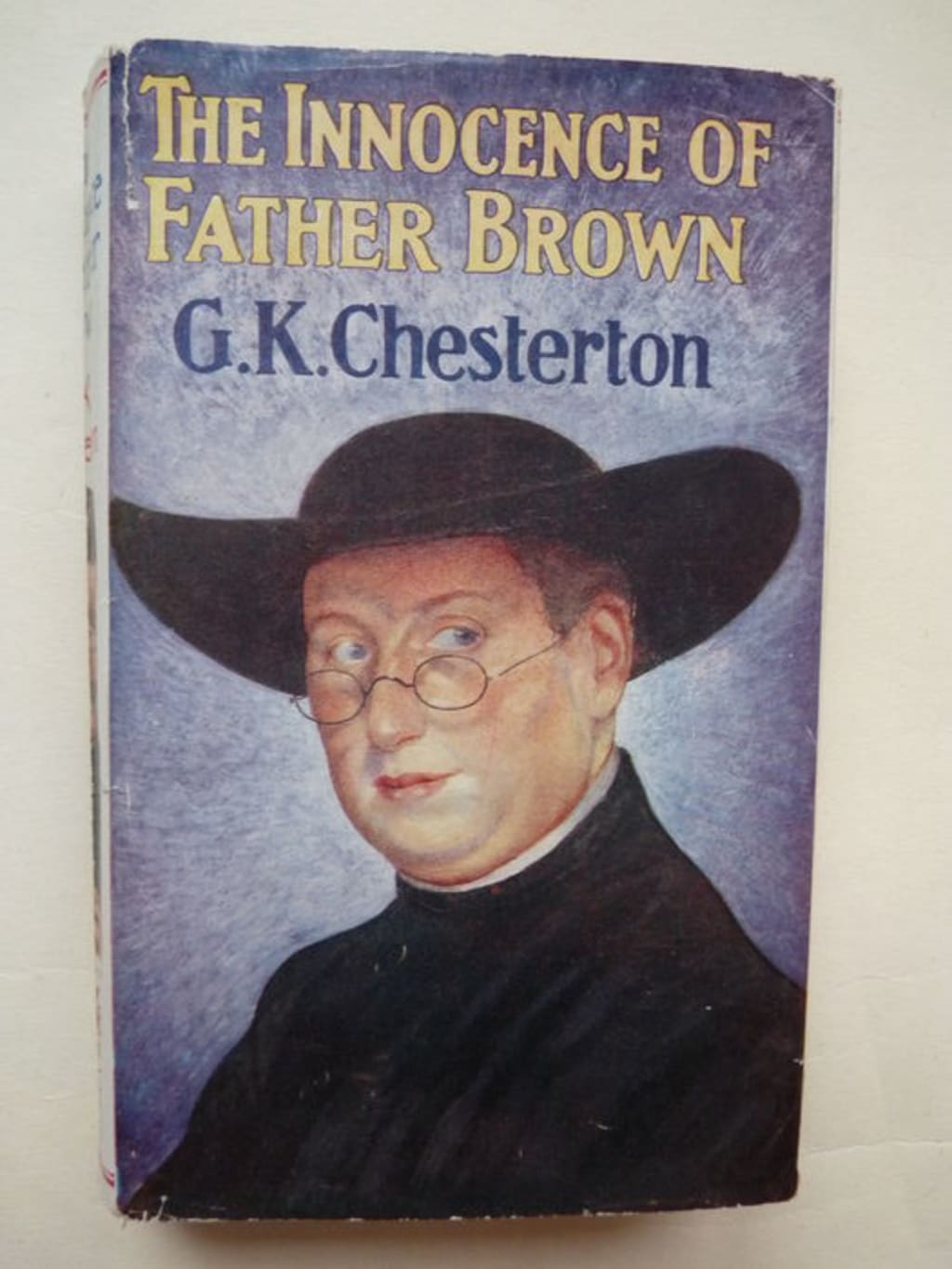"The Invisible Man", by G K Chesterton
A look at an early "Father Brown" story

Gilbert Keith Chesterton (1874-1936) was an English critic, poet and novelist who was well known as one of the most colourful and provocative writers of his day. He was seen by many as a latter-day Samuel Johnson, not only for his common sense and incisive wit, but also for his physically large appearance. His reputation has come under closer scrutiny in recent years due to his perceived anti-Semitism, but that does nothing to affect the quality or otherwise of his literary works.
The Story
“The Invisible Man” was the fifth story written by G K Chesterton about his priest/detective Father Brown. It appeared in his original collection of Father Brown stories, entitled “The Innocence of Father Brown”, in 1911.
The setting of the story is Camden Town, a district of north London. A young man, John Turnbull Angus, walks into a café and proposes marriage to the waitress, Laura Hope, who appears to be the only member of staff on the premises. One assumes that the two are not complete strangers to each other, but this is not made clear. She turns him down but, because he refuses to take no for an answer, she tells him the story of her complicated love-life.
She had been living at her father’s pub, The Red Fish, which was somewhere out of town, when she had been the subject of marriage proposals from two suitors, neither of whom she found attractive. One was a very short man, almost a dwarf, named Isidore Smythe. The other, tall and thin but with a terrible squint, was James Welkin. Laura did not want to marry either of them, but neither did she want to hurt their feelings, so she came up with the plan of announcing that she could not marry anyone who had not made his way in the world. The two men promptly set off to seek their fortunes as if, in Laura’s words, “they were in some silly fairy-tale”.
A year has passed, and Laura is now running the café but in real fear that she has been tracked down by James Welkin, the suitor with the squint. She keeps hearing his voice when there is no-one to be seen. She has received letters from Isidore Smythe, who is a now a successful businessman, but as she reads the letters she can hear Welkin’s distinctive laugh.
Angus hears a noise in the street and walks through into the confectioner’s shop that adjoins the café to find a man who can only be Isidore Smythe. He points out that a strip of paper has been pasted on the shop window bearing the message “If you marry Smythe he will die”. Smythe also mentions that he has had threatening letters left at his flat, but nobody has seen anyone who could have brought them. Angus offers to help Smythe, and Laura, by putting the matter into the hands of a private detective that he knows and who lives nearby. He is Flambeau, a reformed former French master criminal who is a character that appears in many of the Father Brown stories.
Angus escorts Smythe back to his flat, which is on the top floor of Himalaya Mansions. On the way he notices billboard advertisements for the product that has made Smythe his fortune, namely large clockwork dolls that perform household duties under the general name of “Smythe’s Silent Service”.
When they reach Smythe’s flat, Angus notices that the place is full of these machines that perform their functions at the touch of a button. He also sees a scrap of paper on the floor with a message that reads: “If you have been to see her today, I shall kill you”.
Angus heads off to fetch Flambeau, but before he leaves he instructs four people, a cleaner, a commissionaire, a policeman and a chestnut seller, to keep a close eye on the premises and report back to him if anyone enters the building while he is away.
Angus finds Flambeau, who is being visited by Father Brown. As the three of them walk back to Himalaya Mansions it starts to snow. On arrival, Angus hears from all four “guards” that nobody has entered the building in his absence, but Father Brown is not so sure, because he can see footprints in the snow that tell a different story.
When they reach Smythe’s flat they find a bloodstain on the floor but no Smythe. Back on ground level, Father Brown asks the policeman to investigate something on his behalf, and when he returns he says that Smythe’s body has been found in the nearby canal. Father Brown then regrets that he forgot to ask if a light brown sack has also been found.
The solution of the mystery revolves around the fact that, according to Chesterton and Father Brown, people tend to observe only what they expect to regard as being out of the ordinary. Nobody saw anyone enter Himalaya Mansions, although they would all have seen the postman do so but dismissed this occurrence because it was unremarkable. A postman does not count as a person in such a context.
As a postman, James Welkin was able to deliver all the letters and messages to Laura and Isidore Smythe, and to take away the latter’s small body in his postman’s sack. Laura could hear Welkin’s voice but not see Welkin himself, because the voice was remarkable but a postman doing his rounds was not. The murderer was invisible because he was all too visible, being as much a part of the background scenery as the trees and the houses. Even the sight of a postman leaving the building with a sack that was fuller than when he entered was apparently not sufficiently out of the ordinary to attract attention.
Does it work?
It’s a reasonable thought on which to hang a story, but does it really stand up to scrutiny? One thing to bear in mind is that this story was written in Edwardian England when the class system held sway and everyone with any money employed servants to perform menial tasks for them. Chesterton hints at this very strongly with his description of Smythe’s mechanical servants who line the walls until called into service to perform a specific task. There is a telling line here in that they are described as “only automatic machines and nobody would have looked at them twice”. This would have been how many middle-class people regarded their human servants.
However, even if the reader is willing to accept that a middle-class person could regard a postman as an invisible public servant, does this really work in the scenario of the story? The people who are asked to keep a lookout are not middle-class but working-class, and of the same social status as a postman. Would a cleaner or chestnut seller really allow a postman to be invisible in the same way that a much wealthier householder would? The commissionaire actual states that he would ask any man, “duke or dustman”, what his business was on entering the building, but would he really have made a distinction between a dustman and a postman in this regard, even to the extent that the latter was “invisible” to him?
It is on this point of class distinction that the story rests in terms of its acceptability to the reader. It is probably true to say that it would have been read differently by its original readers in class-ridden England than by members of today’s much more classless society.
About the Creator
John Welford
I am a retired librarian, having spent most of my career in academic and industrial libraries.
I write on a number of subjects and also write stories as a member of the "Hinckley Scribblers".






Comments
There are no comments for this story
Be the first to respond and start the conversation.